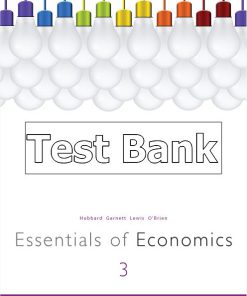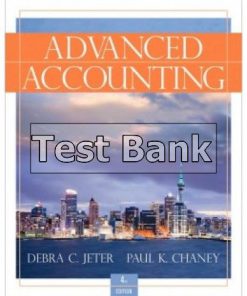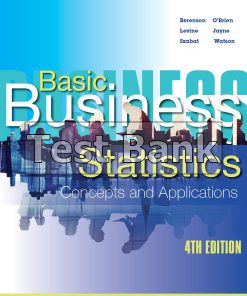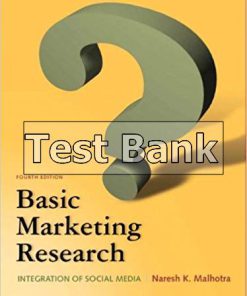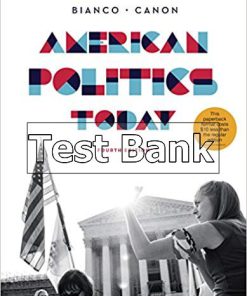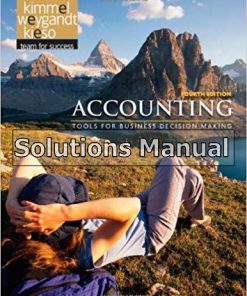$26.50$50.00 (-47%)
In stock
Essentials of Economics 4th Edition Hubbard Solutions Manual.
You may also like
Essentials of Economics 4th Edition Hubbard Solutions Manual
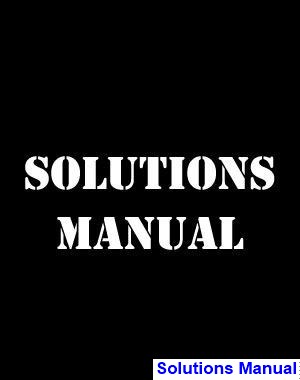
Product details:
- ISBN-10 : 1292059435
- ISBN-13 : 978-1292059433
- Author: R. Glenn Hubbard
For one-semester Principles of Economics courses at two- and four-year colleges and universities
Reveal the relevance of economics through real-world business examples
One of the challenges of teaching Principles of Economics is fostering interest in concepts that may not seem applicable to students’ lives. Essentials of Economics, Fourth Edition makes economics relevant by demonstrating how real businesses use economics to make decisions every day. Regardless of their future career path—opening an art studio, trading on Wall Street, or bartending at the local pub—students will benefit from understanding the economic forces behind their work.
Table contents:
- Part 1 Introduction
- Chapter 1 Economics: Foundations and models
- Three key economic ideas
- People are rational
- People respond to economic incentives
- Optimal decisions are made at the margin
- Solved problem 1.1 Apple makes a decision at the margin
- Scarcity, trade-offs and the economic problem that every society must solve
- What goods and services will be produced?
- How will the goods and services be produced?
- Who will receive the goods and services produced?
- Centrally planned economies versus market economies
- The modern ‘mixed’ economy
- Efficiency and equity
- Economic models
- The role of assumptions in economic models
- Forming and testing hypotheses in economic models
- Normative and positive analysis
- Don’t let this happen to you
- Don’t confuse positive analysis with normative analysis
- Economics as a social science
- Making the connection 1.1 Good economics doesn’t always mean good politics
- Microeconomics and macroeconomics
- Conclusion
- An inside look
- Rise of the machines: What jobs will survive as robots move into the workplace?
- Chapter summary and problems
- Chapter 1 Appendix
- Using graphs and formulas
- Graphs of one variable
- Graphs of two variables
- Formulas
- Appendix Questions and problems
- Chapter 2 Choices and trade-offs in the market
- Production possibility frontiers and real-world trade-offs
- Graphing the production possibility frontier
- Increasing marginal opportunity costs
- Making the connection 2.1 Trade-offs and emergency aid relief
- Economic growth
- Comparative advantage and trade
- Specialisation and gains from trade
- Absolute advantage versus comparative advantage
- Don’t let this happen to you
- Don’t confuse absolute advantage with comparative advantage
- Comparative advantage and the gains from trade
- Solved problem 2.1 Comparative advantage and the gains from trade
- The market system
- The gains from free markets
- The market mechanism
- Making the connection 2.2 Story of the market system in action: I, pencil
- The role of the entrepreneur
- The legal basis of a successful market system
- Protection of private property
- Making the connection 2.3 Illegal downloads from cyberspace
- Enforcement of contracts and property rights
- Conclusion
- An inside look
- Expansion and production mix at BMW
- Chapter summary and problems
- Part 2 How the market works
- Chapter 3 Where prices come from: The interaction of demand and supply
- The demand side of the market
- Demand schedules and demand curves
- The law of demand
- Holding everything else constant: The ceteris paribus condition
- What explains the law of demand?
- Variables that shift market demand
- Making the connection 3.1 The ageing of the Baby Boom generation
- A change in demand versus a change in quantity demanded
- The supply side of the market
- Supply schedules and supply curves
- The law of supply
- Variables that shift supply
- A change in supply versus a change in quantity supplied
- Market equilibrium: Putting demand and supply together
- How markets eliminate surpluses and shortages
- Demand and supply both count
- Shifts in a curve versus movements along a curve
- The effect of demand and supply shifts on equilibrium
- Don’t let this happen to you
- Remember: A change in a good’s price does not cause the demand or supply curve to shift
- The effect of shifts in supply on equilibrium
- The effect of shifts in demand on equilibrium
- The effect of shifts in demand and supply over time
- Solved problem 3.1 Demand and supply both count: Pharmacists and accountants
- Making the connection 3.2 The rise and rise of fitness trackers
- Solved problem 3.2 Demand and supply both count: The australian housing market
- Conclusion
- An inside look
- Global PC shipments decline for 12th straight quarter but HP bucks fall, Gartner says
- Chapter summary and problems
- Chapter 3 Appendix
- Behavioural economics: Do people make their choices rationally?
- Pitfalls in decision making
- Ignoring non-monetary opportunity costs
- Making the connection 3A.1 Experimental economics: A test of fairness?
- Business implications of consumers ignoring non-monetary opportunity costs
- Failing to ignore sunk costs
- Making the connection 3A.2 A blogger who understands the importance of ignoring sunk costs?
- Being unrealistic about future behaviour
- Solved problem 3A.1 How do you get people to save more of their income?
- Appendix Questions and problems
- Chapter 4 Elasticity: The responsiveness of demand and supply
- Price elasticity of demand and its measurement
- Measuring the price elasticity of demand
- Elastic demand and inelastic demand
- An example of calculating price elasticities
- The midpoint formula
- Solved problem 4.1 Calculating the price elasticity of demand for wheat using the midpoint formula
- When demand curves intersect, the flatter curve is more elastic
- Polar cases of perfectly elastic and perfectly inelastic demand
- Don’t let this happen to you
- Don’t confuse inelastic with perfectly inelastic
- The determinants of the price elasticity of demand
- Availability of close substitutes
- Passage of time
- Making the connection 4.1 The price elasticity of demand for breakfast cereal
- Luxuries versus necessities
- Solved problem 4.2 Using price elasticity to analyse the drug problem
- Definition of the market
- Share of the good in the consumer’s budget
- The relationship between price elasticity and total revenue
- Elasticity and revenue with a linear demand curve
- Solved problem 4.3 Price and revenue don’t always move in the same direction
- Estimating price elasticity of demand
- Other demand elasticities
- Cross-price elasticity of demand
- Income elasticity of demand
- Making the connection 4.2 Using elasticity to analyse the disappearing family farm
- The price elasticity of supply and its measurement
- Measuring the price elasticity of supply
- Determinants of the price elasticity of supply
- Making the connection 4.3 Why are oil prices so unstable?
- Polar cases of perfectly elastic and perfectly inelastic supply
- Using price elasticity of supply to predict changes in price
- Conclusion
- An inside look
- Liquor retailing in Australia
- Chapter summary and problems
- Chapter 5 Economic efficiency, government price setting and taxes
- Consumer surplus and producer surplus
- Consumer surplus
- Producer surplus
- Making the connection 5.1 The consumer surplus from broadband Internet service
- What consumer surplus and producer surplus measure
- The efficiency of competitive markets
- Marginal benefit equals marginal cost in competitive equilibrium
- Economic surplus
- Deadweight loss
- Economic surplus and economic efficiency
- Government intervention in the market: Price floors and price ceilings
- Price floors: The example of agricultural markets
- Price ceilings: The example of rent controls
- Making the connection 5.2 Price floors in labour markets: The minimum wage
- Black markets and peer-to-peer sites
- Don’t let this happen to you
- Don’t confuse scarcity with a shortage
- Solved problem 5.1 What is the economic effect of a black market for apartments?
- The results of government intervention: Winners, losers and inefficiency
- Positive and normative analysis of price ceilings and price floors
- The economic impact of taxes
- The effect of taxes on economic efficiency
- Tax incidence: Who actually pays a tax?
- Solved problem 5.2 When do consumers pay all of a sales tax increase?
- Conclusion
- An inside look
- Australian smokers to pay more than $45 for a packet of cigarettes from 2020
- Chapter summary and problems
- Part 3 Firms and market structures
- Chapter 6 Technology, production and costs
- Technology: An economic definition
- The short run and the long run in economics
- The difference between fixed costs and variable costs
- Making the connection 6.1 Improving inventory control at Bunnings
- Implicit costs versus explicit costs
- Making the connection 6.2 Fixed costs in the publishing industry
- The production function
- A first look at the relationship between production and cost
- The marginal product of labour and the average product of labour
- The law of diminishing returns
- Making the connection 6.3 Adam Smith’s famous account of the division of labour in a pin factory
- The relationship between marginal product and average product
- Graphing production
- The relationship between short-run production and short-run cost
- Marginal cost
- The relationship between marginal cost and average total cost
- Solved problem 6.1 The relationship between marginal cost and average total cost
- Graphing cost curves
- Costs in the long run
- Economies of scale
- Long-run average cost curves for bookshops
- Solved problem 6.2 Using long-run average cost curves to understand business strategy
- Making the connection 6.4 The colossal River Rouge: Diseconomies of scale at the Ford Motor company
- Don’t let this happen to you
- Don’t confuse diminishing returns with diseconomies of scale
- Conclusion
- An inside look
- Tesla: The Gigafactory is the key
- Chapter summary and problems
- Chapter 7 Firms in perfectly competitive markets
- Perfectly competitive markets
- A perfectly competitive firm cannot affect the market price
- The demand curve for the output of a perfectly competitive firm
- Don’t let this happen to you
- Don’t confuse the demand curve for Farmer Jones’ oats with the market demand curve for oats
- How a firm maximises profit in a perfectly competitive market
- Revenue for a firm in a perfectly competitive market
- Determining the profit-maximising level of output
- Illustrating profit or loss on the cost curve graph
- Showing profit on the graph
- Solved problem 7.1 Determining profit-maximising price and quantity
- Don’t let this happen to you
- Remember that firms maximise total profit, not profit per unit
- Illustrating when a firm is breaking even or operating at a loss
- Deciding whether to produce or to shut down in the short run
- Making the connection 7.1 Losing money in the solar panel industry
- Solved problem 7.2 When to shut down an oil well
- The supply curve of the firm in the short run
- The market supply curve in a perfectly competitive industry
- ‘If everyone can do it, you can’t make money at it’–the entry and exit of firms in the long
- Economic profit and the entry or exit decision
- Long-run equilibrium in a perfectly competitive market
- The long-run supply curve in a perfectly competitive market
- Increasing-cost and decreasing-cost industries
- Making the connection 7.2 In the App Store, easy entry makes the long run pretty short
- Perfect competition and efficiency
- Productive efficiency
- Allocative efficiency
- Dynamic efficiency
- Solved problem 7.3 How productive efficiency and dynamic efficiency benefit consumers
- Conclusion
- An inside look
- Why the sharing economy could have a hard landing in Australia
- Chapter summary and problems
- Chapter 8 Monopoly markets
- Is any firm ever really a monopoly?
- Where do monopolies come from?
- Making the connection 8.1 Does Hasbro have a monopoly on Monopoly?
- Entry blocked by government action
- Control of a key resource
- Network externalities
- Making the connection 8.2 Are diamond (profits) forever? The De Beers diamond monopoly
- Natural monopoly
- How does a monopoly choose price and output?
- Marginal revenue
- Profit maximisation for a monopolist
- Solved problem 8.1 Finding profit-maximising price and output for a monopolist
- Don’t let this happen to you
- Don’t assume that charging a higher price is always more profitable for a monopolist
- Does monopoly reduce economic efficiency?
- Comparing monopoly and perfect competition
- Measuring the efficiency losses from monopoly
- How large are the efficiency losses due to monopoly?
- Market power and technological change
- Government policy towards monopolies
- Trade practices laws and enforcement
- Mergers: The trade-off between market power and efficiency
- Making the connection 8.3 Anti-competitive behaviour in the airline cargo industry
- Regulating natural monopolies
- Solved problem 8.2 Water restrictions and water supply companies
- Conclusion
- An inside look
- Footy fans stuck with Foxtel until 2022
- Chapter summary and problems
- Chapter 8 Appendix
- Price discrimination
- The requirements for successful price discrimination
- Solved problem 8A.1 How Dell Technologies uses price discrimination to increase profits
- Airlines: The kings of price discrimination
- Perfect price discrimination
- Price discrimination across time
- Making the connection 8A.1 The Internet leaves you open to price discrimination
- Appendix Questions and problems
- Chapter 9 Monopolistic competition and oligopoly
- Demand and marginal revenue for a firm in a monopolistically competitive market
- The demand curve for a monopolistically competitive firm
- Marginal revenue for a firm with a downward-sloping demand curve
- How a monopolistically competitive firm maximises profit in the short run
- Solved problem 9.1 How not to maximise profit
- What happens to profit in the long run?
- How does entry of new firms affect the profits of existing firms?
- Don’t let this happen to you
- Don’t confuse zero economic profit with zero accounting profit
- Making the connection 9.1 The rise and decline and rise of Starbucks
- Is zero economic profit inevitable in the long run?
- Solved problem 9.2 Buffalo Wild Wings increase costs to increase demand
- Comparing perfect competition and monopolistic competition
- Excess capacity under monopolistic competition
- Is monopolistic competition inefficient?
- How consumers benefit from monopolistic competition
- Oligopoly and barriers to entry
- Barriers to entry
- Game theory and oligopoly
- A duopoly game: Price competition between two firms
- Firm behaviour and the prisoners’ dilemma
- Don’t let this happen to you
- Don’t misunderstand why each manager ends up charging a price of $450
- Can firms escape the prisoners’ dilemma?
- Making the connection 9.2 Is there a dominant strategy for bidding on eBay?
- Solved problem 9.3 Is advertising a prisoners’ dilemma for Coca-Cola and Pepsi?
- Cartels: the case of OPEC
- Making the connection 9.3 Is Virgin Australia’s business strategy more important than the structur
- Conclusion
- An inside look
- Booming coffee market moves into consolidation phase
- Chapter summary and problems
- Part 4 Markets for factors of production
- Chapter 10 The markets for labour and other factors of production
- The demand for labour
- The marginal revenue product of labour
- Solved problem 10.1 Hiring decisions by a firm that is a price maker
- The market demand curve for labour and the factors that shift it
- The supply of labour
- The market supply curve of labour and the factors that shift it
- Equilibrium in the labour market
- The effect on equilibrium wages of a shift in labour demand
- Making the connection 10.1 Will your future income depend on which courses you take at university?
- The effect on equilibrium wages of a shift in labour supply
- Making the connection 10.2 Should you fear the effect of robots on the labour market?
- Explaining differences in wages
- Don’t let this happen to you
- Remember that prices and wages are determined at the margin
- Making the connection 10.3 Technology and the earnings of ‘superstars’
- Compensating differentials
- Discrimination
- Trade unions
- Solved problem 10.2 Is ‘comparable worth’ legislation the answer to closing the gap between men
- Personnel economics
- Should workers’ pay depend on how much they work or on how much they produce?
- Other considerations in setting compensation schemes
- The markets for capital and natural resources
- The market for capital
- Solved problem 10.3 How to receive your payments
- The market for natural resources
- Monopsony
- The marginal productivity theory of income distribution
- Conclusion
- An inside look
- Huge Indian Premier League pay day for England bad boy Ben Stokes
- Chapter summary and problems
- Part 5 The role of government
- Chapter 11 Government intervention in the market
- What’s good about markets and why does the government intervene?
- The economic bases for government intervention
- Market failure and government failure
- Don’t let this happen to you
- Just because something is wrong, it doesn’t mean the government has to put it right
- Deregulation and privatisation
- Externalities and efficiency
- The effect of externalities
- How externalities in production reduce economic efficiency
- How externalities in consumption reduce economic efficiency
- Externalities and market failure
- What causes externalities?
- The economically efficient level of pollution reduction
- Making the connection 11.1 The reduction in lead in Melbourne’s air
- Don’t let this happen to you
- Remember that it’s the net benefit that counts
- Do property rights matter?
- The problem of transactions costs
- The Coase theorem
- Making the connection 11.2 The fable of the bees
- Government policies to deal with externalities
- Policies for externalities in production
- Policies for externalities in consumption
- Command and control and market-based approaches
- Making the connection 11.3 Should the government tax soft drinks?
- Solved problem 11.1 Using a tax to deal with a negative externality
- Licences to pollute?
- Making the connection 11.4 Can a price on carbon reduce global warming?
- Four categories of goods
- The optimal quantity of a public good
- Common resources
- Policy for business and individual behaviour that can increase economic efficiency
- The rule of law
- Patents, trademarks and copyright protection
- Making the connection 11.5 Who owns the Wizard of Oz?
- Asymmetric information
- Conclusion
- An inside look
- Too big to fail: China pledges to set up landmark emissions trading scheme
- Chapter summary and problems
- Chapter 12 Social policy and inequality
- The tax system
- An overview of the Australian tax system
- Progressive and regressive taxes
- Making the connection 12.1 Which groups pay the most in taxes?
- Marginal and average income tax rates
- Evaluating taxes
- Tax incidence revisited: The effect of price elasticity
- Don’t let this happen to you
- Remember not to confuse who pays the tax with who bears the burden of the tax
- Making the connection 12.2 Do companies really bear the burden of the federal company income tax?
- Solved problem 12.1 The effect of price elasticity on the excess burden of a tax
- Income distribution and poverty
- Measuring the distribution of income and poverty
- The poverty rate in Australia
- Explaining income inequality
- Showing the income distribution with a Lorenz curve
- Problems in measuring poverty and the distribution of income
- Solved problem 12.2 Are many individuals stuck in poverty?
- Making the connection 12.3 Is income all that matters?
- Conclusion
- An inside look
- 3.6 million households pay no net tax after churn
- Chapter summary and problems
- Part 6 Macroeconomic foundations
- Chapter 13 GDP: Measuring total production, income and economic growth
- Gross domestic product measures total production
- Measuring total production: Gross domestic product
- Measuring GDP using the value-added method
- Other measures of total production and total income
- Solved problem 13.1 Calculating GDP
- Methods of measuring gross domestic product
- Production, expenditure and income and the circular-flow diagram
- Components of GDP
- Don’t let this happen to you
- Remember what economists mean by investment
- An equation for GDP and some actual values
- Does GDP measure what we want it to measure?
- Shortcomings in GDP as a measure of total production
- Making the connection 13.1 Why do many developing countries have such large underground economies?
- Shortcomings of GDP as a measure of wellbeing
- Making the connection 13.2 How else can we measure economic wellbeing?
- Real GDP versus nominal GDP
- Calculating real GDP
- Calculating the economic growth rate
- The GDP deflator
- Making the connection 13.3 How did the standard of living in Nigeria almost double overnight?
- Long-run economic growth is the key to rising living standards
- Making the connection 13.4 The connection between economic prosperity and health
- Calculating growth rates and the rule of 70
- What determines the rate of long-run economic growth?
- Solved problem 13.2 Where does long-run growth come from?
- Potential GDP
- What determines how fast economies grow?
- The per-worker production function
- Which is more important for economic growth: More capital or technological change?
- Technological change: The key to sustaining economic growth
- New growth theory
- Is economic growth good or bad?
- Conclusion
- An inside look
- The four factors that drag Australia down
- Chapter summary and problems
- Chapter 14 Unemployment and inflation
- Measuring the unemployment rate and the labour force participation rate
- The labour force survey
- Problems with measuring the unemployment rate
- Solved problem 14.1 What would happen if the ABS labour force survey included the military?
- Trends in labour force participation
- How long are people usually unemployed?
- Job creation and job destruction
- Making the connection 14.1 What explains the increase in welfare recipients?
- Solved problem 14.2 Correctly interpreting labour force data
- The costs of unemployment
- Costs to the economy
- Costs to the individual
- The distribution of unemployment
- Types of unemployment
- Cyclical unemployment
- Frictional unemployment and job search
- Structural unemployment
- Full employment
- Don’t let this happen to you
- Don’t confuse full employment with a zero unemployment rate
- Explaining frictional and structural unemployment
- Government policies and the unemployment rate
- Social security and other payments to the unemployed
- Labour market regulation and deregulation
- Minimum wages
- Trade unions
- Efficiency wages
- Making the connection 14.2 Why did Henry Ford pay his workers twice as much as other car manufacture
- Measuring inflation
- The consumer price index
- Is the CPI accurate?
- Don’t let this happen to you
- Don’t confuse the price level with the inflation rate
- The producer price index
- Using price indexes to adjust for the effects of inflation
- Solved problem 14.3 What has been happening with real wages in Australia?
- Does inflation impose costs on the economy?
- Inflation affects the distribution of income
- The problem with anticipated inflation
- The problem with unanticipated inflation
- Hyperinflation
- Deflation
- Making the connection 14.3 What’s so bad about falling prices?
- What causes inflation?
- Conclusion
- An inside look
- All eyes on inflation next week, but not everything is as it seems . . .
- Chapter summary and problems
- Chapter 15 Aggregate demand and aggregate supply analysis
- The business cycle
- Some basic business cycle definitions
- What happens during the business cycle
- Don’t let this happen to you
- Don’t confuse short-run fluctuations with long-run trends
- Aggregate demand
- Why is the aggregate demand curve downward sloping?
- Shifts of the aggregate demand curve versus movements along it
- The variables that shift the aggregate demand curve
- Don’t let this happen to you
- Be clear why the aggregate demand curve is downward sloping
- Making the connection 15.1 Should Germany reduce its reliance on exports?
- Solved problem 15.1 Movements along the aggregate demand curve versus shifts of the aggregate demand
- Aggregate supply
- The long-run aggregate supply curve
- Shifts in the long-run aggregate supply curve
- The short-run aggregate supply curve
- Shifts of the short-run aggregate supply curve versus movements along it
- Variables that shift the short-run aggregate supply curve
- Variables that shift the short-run and long-run aggregate supply curves
- Macroeconomic equilibrium in the long run and the short run
- Recessions, expansions and supply shocks
- A dynamic aggregate demand and aggregate supply model
- What is the usual cause of inflation?
- Making the connection 15.2 Does technological change create unemployment?
- Solved problem 15.2 Showing the oil shock of 1974 on a dynamic aggregate demand and aggregate supply
- Conclusion
- An inside look
- Housing boom lifts Harvey Norman’s profit
- Chapter summary and problems
- Chapter 15 Appendix
- The aggregate expenditure model
- Showing a recession on the 45˚ line diagram
- Appendix Summary and problems
- Part 7 Monetary and fiscal policy
- Chapter 16 Money, banks and the Reserve Bank of Australia
- What is money and why do we need it?
- Barter and the invention of money
- The functions of money
- Making the connection 16.1 Money in a World War II prisoner-of-war camp
- What can serve as money?
- Making the connection 16.2 Coca-Cola dries up as the Zimbabwe currency no longer serves as money
- How do we measure money today?
- M1: the narrowest definition of the money supply
- Broader definitions of money
- Don’t let this happen to you
- Don’t confuse money with income or wealth
- Making the connection 16.3 Are bitcoins money?
- How do financial institutions create money?
- Bank balance sheets
- Using T-accounts to show how a bank can create money
- The simple deposit multiplier
- Solved problem 16.1 Showing how banks create money
- The simple deposit multiplier versus the real-world deposit multiplier
- An overview of the financial system
- The role of financial markets and financial intermediaries
- The Reserve Bank of Australia
- How the RBA manages financial liquidity and interest rates
- Exchange rate management
- Conclusion
- An inside look
- Innovation in electronic payments to accelerate demise of cheques
- Chapter summary and problems
- Chapter 17 Monetary policy
- What is monetary policy?
- The goals of monetary policy
- The demand for and supply of money
- The demand for money
- Shifts in the money demand curve
- How the RBA manages the supply of cash
- Equilibrium in the money market
- The market for loanable funds
- Making the connection 17.1 Ebenezer Scrooge: Accidental promoter of economic growth?
- Solved problem 17.1 Are future budget deficits a threat to the economy?
- A tale of two interest rates
- Monetary policy and economic activity
- How interest rates affect aggregate demand
- Making the connection 17.2 Why did the Global Financial Crisis occur?
- The effects of monetary policy on real GDP and the price level
- Can the RBA eliminate contractions and recessions?
- Using monetary policy to fight inflation
- Solved problem 17.2 The effects of monetary policy
- Is monetary policy always effective and fair?
- Don’t let this happen to you
- Remember that with monetary policy, it’s the interest rate—not the money—that counts
- Making the connection 17.3 How does the RBA measure inflation?
- Is the independence of the Reserve Bank of Australia a good idea?
- The case for RBA independence
- The case against RBA independence
- Conclusion
- An inside look
- RBA independence on interest rates: A tick for a resilient economy
- Chapter summary and problems
- Chapter 18 Fiscal policy
- What is fiscal policy?
- What fiscal policy is and what it isn’t
- Automatic stabilisers versus discretionary fiscal policy
- An overview of government spending and taxes
- Using fiscal policy to influence aggregate demand
- Expansionary fiscal policy
- Contractionary fiscal policy
- Don’t let this happen to you
- Don’t confuse fiscal policy and monetary policy
- The multiplier effect and government purchases and tax multipliers
- The government purchases multiplier
- A simple formula for the multiplier
- Summarising the multiplier effect
- The tax multiplier
- The effect of changes in tax rates
- Taking into account the effects of aggregate supply
- The multipliers work in both directions
- Making the connection 18.1 The multiplier in reverse: The Great Depression of the 1930s
- Solved problem 18.1 Fiscal policy multipliers
- The limits to using fiscal policy to stabilise the economy
- Does government spending reduce private spending?
- Crowding out in the short run
- Crowding out in the long run
- Making the connection 18.2 Why was the United States’ recession of 2007–2009 so severe?
- Deficits, surpluses and federal government debt
- How the federal budget can serve as an automatic stabiliser
- Should the federal budget always be balanced?
- Solved problem 18.2 The effect of economic fluctuations on the budget deficit
- Is government debt a problem?
- Making the connection 18.3 Government bankruptcy in Europe
- The effects of fiscal policy in the long run
- The long-run effects of tax policy
- Tax simplification
- The economic effect of tax reform
- How large are supply-side effects from tax cuts?
- Conclusion
- An inside look
- Japan cabinet approves $175b fiscal boost
- Chapter summary and problems
- Chapter 18 Appendix 1
- Is there a short-run trade-off between unemployment and inflation?
- The Phillips curve
- Explaining the Phillips curve with aggregate demand and aggregate supply curves
- Is the Phillips curve a policy menu?
- Is the short-run Phillips curve stable?
- The long-run Phillips curve
- The role of expectations of future inflation
- Do workers understand inflation?
- Appendix 1 Questions and problems
- Chapter 18 Appendix 2
- A closer look at the multiplier
- An expression for equilibrium real GDP
- A formula for the government purchases multiplier
- A formula for the tax multiplier
- The ‘balanced budget’ multiplier
- The effects of changes in tax rates on the multiplier
- The multiplier in an open economy
- Appendix 2 Problems
- Part 8 The international economy
- Chapter 19 Comparative advantage and the gains from international trade
- An overview of international trade
- The importance of trade to the Australian economy
- Australian international trade in a world context
- Making the connection 19.1 The iPhone is made in China . . . or is it?
- Comparative advantage in international trade
- A brief review of comparative advantage
- Comparative advantage and absolute advantage
- How countries gain from international trade
- Increasing consumption through trade
- Solved problem 19.1 The gains from trade
- Why don’t we see complete specialisation?
- Does anyone lose as a result of international trade?
- Don’t let this happen to you
- Remember that trade creates both winners and losers
- Where does comparative advantage come from?
- Government policies that restrict international trade
- Tariffs
- Quotas
- Measuring the economic impact of the sugar quota
- Solved problem 19.2 Measuring the economic effect of a quota
- Gains from unilateral elimination of tariffs and quotas
- Domestic support policies
- Other barriers to trade
- The arguments over trade policies and globalisation
- Why do some people oppose the World Trade Organization?
- Dumping
- Making the connection 19.2 The unintended consequences of banning goods made with child labour
- Radical environmentalism
- Positive versus normative analysis (once again)
- Conclusion
- An inside look
- China-Australia Free Trade Agreement: outcomes at a glance
- Chapter summary and problems
- Chapter 20 Macroeconomics in an open economy
- The balance of payments: Linking Australia to the international economy
- The current account
- The capital account
- The financial account
- Why is the balance of payments always zero?
- Don’t let this happen to you
- Don’t confuse the balance of trade, the current account balance and the balance of payments
- Solved problem 20.1 Understanding the arithmetic of open economies
- The foreign exchange market and exchange rates
- Equilibrium in the market for foreign exchange
- Don’t let this happen to you
- Don’t confuse what happens when a currency appreciates with what happens when it depreciates
- How do shifts in demand and supply affect the exchange rate?
- Some exchange rates are not determined by the market
- Making the connection 20.1 The Chinese yuan: The world’s most controversial currency
- How movements in the exchange rate affect exports and imports
- Solved problem 20.2 The effect of changing exchange rates on the prices of imports
- The real exchange rate
- Exchange rate systems
- The current exchange rate system
- The floating dollar
- What determines exchange rates in the long run?
- Making the connection 20.2 The Big Mac theory of exchange rates
- The four determinants of exchange rates in the long run
- Making the connection 20.3 Greece and Germany: Diverse economies, common currency
- The international sector and national saving and investment
- Current account balance equals net foreign investment
- Domestic saving, domestic investment and net foreign investment
- The effect of a government budget deficit on investment
- Is Australia’s current account deficit a problem?
- Making the connection 20.4 International debt relief for poor countries
- Monetary policy and fiscal policy in an open economy
- Monetary policy in an open economy
- Fiscal policy in an open economy
- Conclusion
- An inside look
- Brexit tipped to push $A higher, RBA to cut rate
- Chapter summary and problems
- Glossary
- Index
People also search:
essentials of economics 4th edition
essentials of economics 4th edition solutions
essentials of economic growth
4 importance of economics
essentials of econometrics 4th edition



